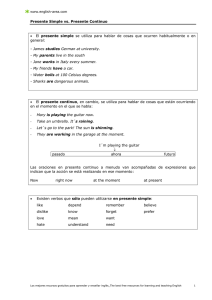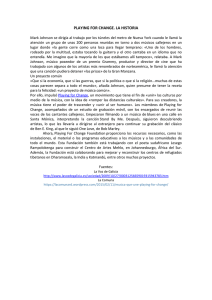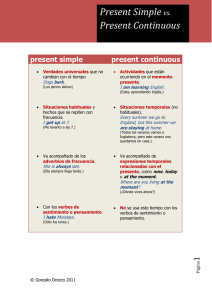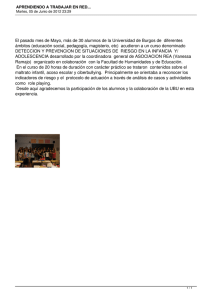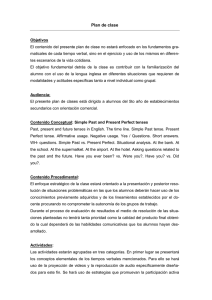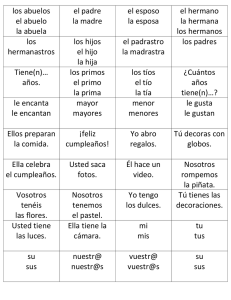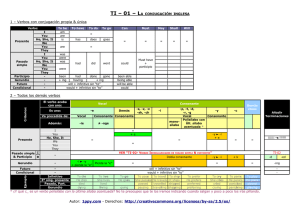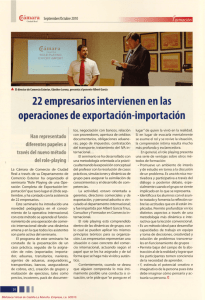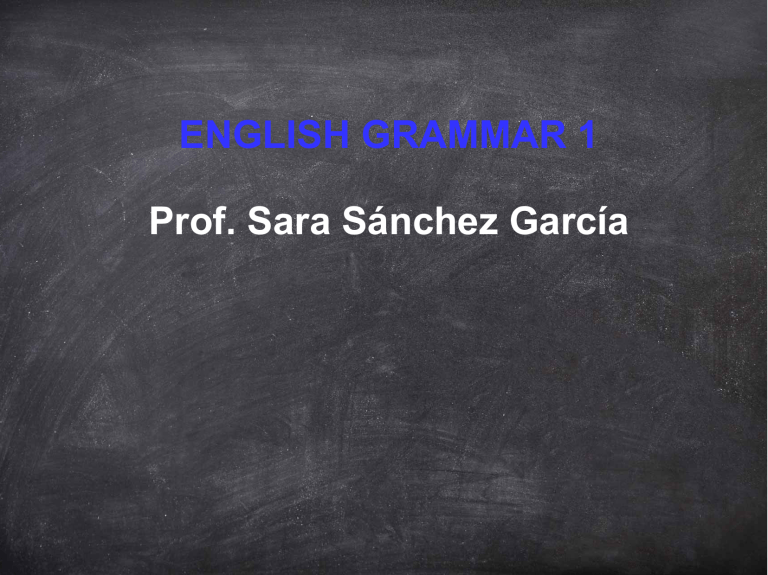
ENGLISH GRAMMAR 1 Prof. Sara Sánchez García 1. Present Tenses PRESENT SIMPLE Structure: You play/ She plays You don’t play/ She doesn’t play Do you play?/ Does she play? My father ___________(work) in a bank. My parents ___________(live) in Madrid. 1. Present Tenses Regla de la ‘s’ 1. Como norma general se añade –s (3as personas) 2. Si el verbo acaba en consonante+y como en Study, Cry, Try se elimina la ‘y’ y se añade –ies: He studies. 3. Todos los verbos acabados en: ss,sh,x,ch,o añaden –es: He watches. Usos - Rutinas y hábitos: I get up at 8:00 then I have a shower and have breakfast. - Horarios/timetables or schedules: The train leaves at 19:30 pm. - Leyes universales o conocimiento general: The earth goes around the sun; The river Amazon flows into the Atlantic Ocean. 1. Present Tenses PRESENT CONTINUOUS Structure: I am playing/ You are playing/ She is playing I am not playing/ You aren’t playing/ She isn’t playing Am I playing?/Are you playing?/Is she playing? My grandparents ___________(go) to the store now. Peter ___________(study) in his room right now. 1. Present Tenses Cómo añadir –ing 1. Como norma general se añade –ing. 2. Los verbos que acaban en –e como Make, Take, Save, pierden la ‘e’ y añaden –ing: Make-> Making; Take-> Taking; Save→Saving. 3. Los verbos monsílabos que acaben en consonante+vocal+consonante como Get, Stop y Swim doblan la última consonante: Get->Getting; Stop->Stopping; Swim→Swimming. (Excepto verbos que acaben en w,k,x: Fix, Flow…) 4. Los verbos acabados en –y simplemente añaden –ing sin eliminar la ‘y’. Play->Playing; Study->Studying; Try->Trying. 1. Present Tenses Usos - Acciones y diálogos que están teniendo lugar en el momento en el que se habla: I am watching television right now; Look! Those kids are fighting! - Acciones que se salen de la rutina. Situaciones temporales. Para planes próximos en el futuro: I am having dinner with my family tonight. !!! Uso con ‘always’ para malos hábitos o quejas repetidas: She is always leaving the lights on; You’re always forgeting your keys! *Lista verbos estáticos = NO pueden ir en -ing form Muchas gracias por su atención
